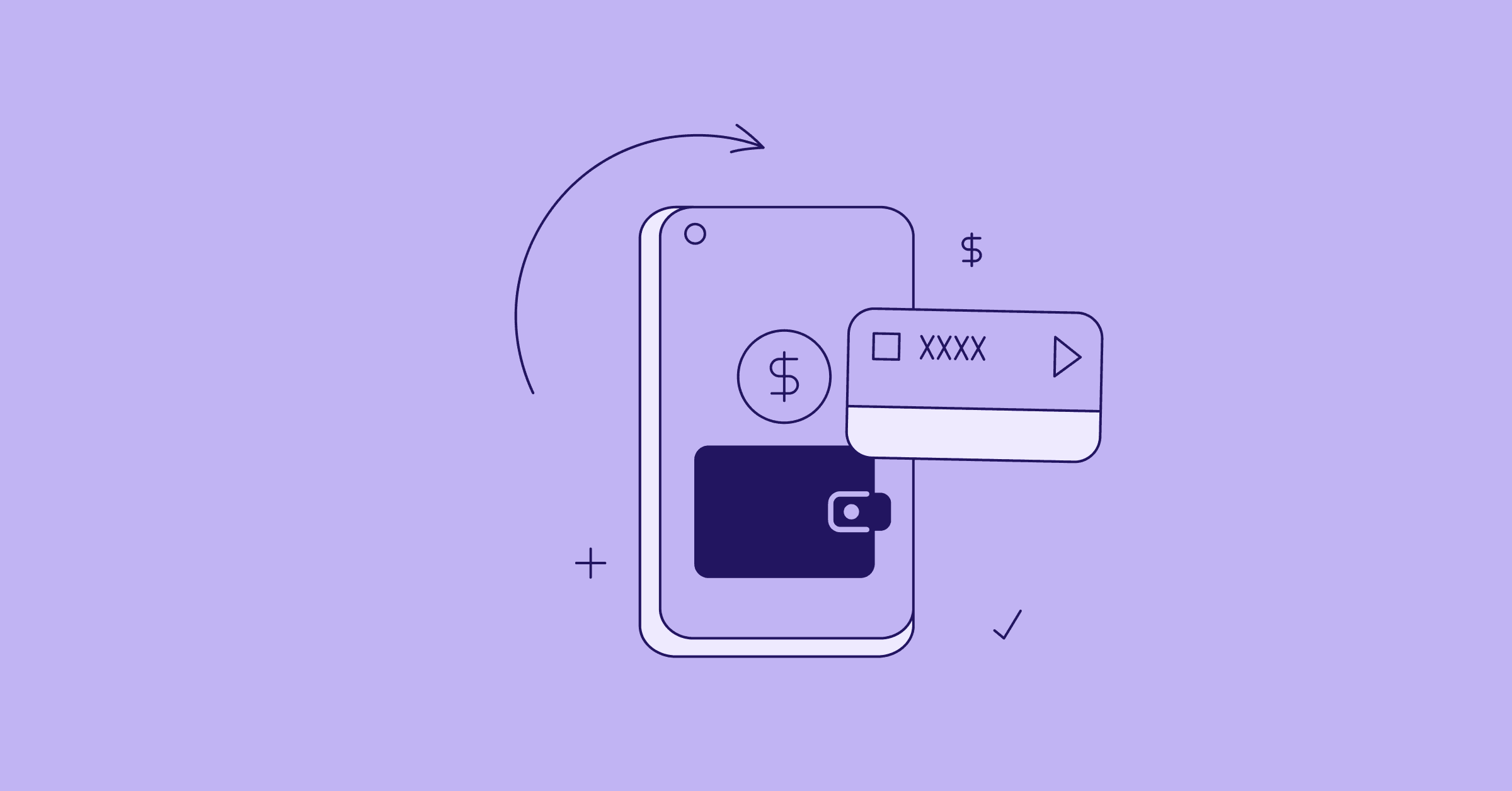November 03, 2022
Virtual Cards vs Physical Cards: What are The Differences and Which is Better?

Sign up for our newsletter
Stay informed with the latest trends and best practices in finance and procurement.

In today’s world, financial transactions are more diverse and accessible than ever, making the choice between virtual or physical cards increasingly significant.
These two payment methods form a crossroads where security, tradition, and convenience intersect. Virtual cards, with their transformative qualities, are challenging the time-honored reign of physical cards, which have long formed the cornerstone of online and in-person transactions.
Here, we take a closer look at the crucial differences between virtual cards and physical cards, including the potential advantages and drawbacks of each payment option, and shedding light on scenarios where they shine.
What are Virtual Cards?
Just as it sounds, virtual credit cards, virtual debit cards, or virtual cards (as most people say) are digital payment cards with no physical form. They solely exist in an electronic format and can be used for online and in-store transactions.
Virtual cards are typically linked to a physical card or bank account, but are always represented digitally with a virtual card number.
How are Virtual Cards Issued?
Virtual cards are typically issued by banks, financial institutions, and payment service providers. The virtual (not actual cards) are generated through secure online platforms or mobile apps.
When a virtual card is issued, it comes with a unique set of card details. This includes:
- Card number
- Expiration date
- Security code
All of this is similar to a physical card.
Key Advantages of a Virtual Card
There are several advantages to using a virtual card for your employee expenses. Some of these are:
Safety and Security
Since virtual cards are not physically present, they cannot be stolen or lost. The data on a virtual card typically carries a single to a limited purpose, ensuring the company’s original bank account and credit card number remain private.
This is why a business will only issue one or two physical cards per employee, whereas staff can be issued hundreds of virtual cards (because they expire quickly).
Even when virtual cards are not 100% secure, the threat is confined to a specific card in the event of a data breach. A business can cancel a virtual card in seconds, with zero interruptions to business or planned payments.
Convenience and Ease of Use
Virtual cards are convenient for online shopping and other digital transactions. They are quickly generated and managed through online banking websites and apps, with details easily copied and pasted. They can also be kept in a digital wallet on your mobile device.
Virtual cards, paired with a smart spend management platform, will enhance performance and efficiency through accounting automation. This enables employees to request and receive funds instantly, employers to easily set and enforce spend policies, and A/P departments to enjoy the automatic sync to the General Ledger.
Having designated cards for separate vendors, team members, or subscriptions allows for cleaner and clearer reconciliation and audit processes. The real-time visibility granted by virtual cards provides companies with big-picture context and the opportunity to make the best decision at any given moment.
Accessibility and Control
Virtual cards are accessible 24/7 through online platforms. This makes them suitable for international transactions and easy to replace if lost or compromised.
With virtual cards, companies have better control of non-payroll spending. Applying limits on virtual expenses, expiry dates, and usage, reduces the risk of overspending, costly auto-renewals, and discrepancies.
Potential Drawbacks of a Virtual Card
Limited Acceptance
Unlike a Visa or Mastercard, not all merchants and websites accept virtual cards. This limits their usability in some cases. This is why checking the acceptance policies of a company you want to transact with is critical.
Zero Physical Presence
Some employees may still need a physical card for in-person transactions or as a backup option. Virtual cards lack the tangible quality of traditional cards, which some individuals may find disconcerting.
What are Physical Cards?
Physical cards are traditional payment cards used in a physical form. They’re usually made from plastic, metal, or other durable materials and are commonly used for in-person transactions at point-of-sale terminals and ATMs.
How are Physical Cards Issued?
Physical cards are usually issued by banks and other financial institutions. When you open an account or apply for a credit or debit card, you receive a new card in the mail. These will typically come embossed with the following card information:
- Card details
- Card number (16-digit number)
- Expiration date
- CVV number (security code)
Key Advantages of a Physical Card
There are many advantages to using a physical card for your business expenses. Some of these are:
Widespread Acceptance
Cardholders know that the majority of places, both in-store and online, will accept physical cards. The fintech is part of how we do business on a daily basis. This makes them a versatile payment option for in-store purchases, travel, and other traditional transactions.
Tangibility
Physical cards provide a reassuring and tangible form of payment. This enables individuals to see and feel their payment method, enhancing familiarity and trust.
Traditional Use
Many people are simply accustomed to using physical cards, which has been the standard for decades. This often makes physical cards the preferred choice for many businesses.
Potential Drawbacks of Physical Cards
Security Risks
As we all know, physical cards can be lost or stolen, leading to potential security risks. If you don’t immediately report it, unauthorized transactions can occur.
Chip cards and contactless technology (think Google Pay or Apple Pay at checkout) have improved the safety of physical cards, but the risks haven’t been eliminated entirely.
Inconvenience
Physical cards require proper storage, which can become inconvenient, the more cards you have. They will also wear out over time and will need to be replaced.
Slower Processes
When a business uses physical cards, obtaining them can be a tedious process. This can waste valuable time and stand in the way of fast-paced opportunities.
With physical cards, tedious bureaucracy wastes valuable time and stands in the way of fast-paced opportunities.
When to Use Virtual Cards
Virtual cards have a variety of uses in the real world. They work great for online shopping and are ideal for making online purchases, as they reduce the chances of theft or fraud.
Companies also use virtual cards for subscription services and recurring payments, as they can generate a unique card number for one specific vendor. Additionally, virtual cards are often used for travel, hotels, and flights, offering businesses a little more control.
Tips for Using a Virtual Card
There are many ways to use a virtual card, but consider these tips:
- Set Spending Limits: Some virtual card providers allow a business to set a ceiling on spend, helping to align with your budget.
- Monitor Transactions: Regularly monitor card activity to ensure there are no unauthorized transactions taking place.
- Keep Backup Options: While virtual cards are incredibly versatile, it’s always wise to have a physical card as backup for in-store purchases.
When to Use Physical Cards
There are many scenarios where physical cards are preferred. They are needed for any form of in-person shopping, where a physical card swipe or chip insertion is required. They are also quite useful when traveling abroad, as some regions have limited virtual card acceptance. In this case, physical cards provide a reliable payment method.
Physical cards are also required when using an ATM for cash withdrawals. Virtual cards cannot produce cash for you from an ATM, which can be super important while traveling.
Tips for Using a Physical Card
There are many ways to use a physical card. Here are a few tips on how:
- Keep it Safe: Always safeguard your physical card and report a loss or theft immediately. Regularly monitor statements for any unauthorized transactions as well.
- Upgrade to Chips: If and when available, choose chip-enabled cards for enhanced security.
- Notify the Bank: If you plan to travel, always notify the bank or card issuer to remove any blocks you might have from unusual activity.
Which is Better: Virtual or Physical Cards?
That really is the golden question, isn’t it?
Top Considerations
- Business Needs: Consider where and how the card will be used. Is it online shopping or travel?
- Convenience vs. Security: There is a trade-off between the security of virtual cards vs. the convenience of physical cards.
- Merchant Acceptance: What do your top vendors accept? That’s the main solution you should choose.
Context and Preferences
There is also the importance of context and individual preferences. The choice between physical and virtual cards depends on individual preference, as well as specific use cases. Some may opt for a mix of both cards, to leverage the advantage of each type.
Hybrid Solutions
Many businesses choose the hybrid route, supplying employees with both forms of payment. Then, some virtual card accounts can also be linked to physical cards. Consider what companies like PayPal are doing. The landscape for payment methods continues to evolve, including other payment types like cryptocurrencies, mobile wallets, and other innovations that are shaping the future of global payments.
Case Studies on Virtual Cards vs. Physical Cards
Who is Using Virtual Cards?
Freelancers and Gig Workers
Contractors often use virtual cards to receive payments from clients. Platforms like Upwork and Fiverr offer prepaid cards, giving freelancers even quicker access to their earnings, without the need for a physical bank account.
Expense Management Teams
Many businesses have adopted virtual cards to more effectively manage business expenses. For example, a tech startup might issue virtual cards to their employees for travel expenses and software subscriptions. This allows them to control and monitor spend, while reducing the risk of misuse.
Online Retailers
E-commerce platforms like Amazon provide virtual cards to customers for making purchases. These cards are loaded with a specific amount, adding an additional layer of security for online shopping. They are also disposable, which prevents recurring charges (if desired).
Who is Using Physical Cards?
Travel and Hospitality
The travel industry extensively uses physical cards. Travelers will often book hotel rooms, flights, and rental cars using their physical credit cards since many of these vendors will not accept virtual cards. Physical cards are the preferred choice for all travel.
ATM Cash Withdrawals
Physical debit cards are always used at ATMs for cash withdrawals. Travelers and individuals who require cash depend on physical cards, especially in regions where virtual card acceptance is limited.
Brick-and-Mortar Retail
Physical retail stores typically require a physical debit or credit card for transactions. For example, when grocery shopping, customers are required to swipe, dip, or tap a physical card to purchase items.
Just Charge It!
So what have we learned? The decision between a virtual and physical card is anything but a one-size-fits-all solution. The choice is rooted in preferences, specific use cases, and evolving security considerations. However, the narrative of virtual cards versus physical cards is not one of competition, but of coexistence. Each offers its own unique benefits, and each addresses specific needs. No one says you have to decide between the two. There is no right or wrong choice; only what works best for you. Take the time to assess your business needs, weigh the pros and cons, and explore the world of hybrid solutions. The decision is yours; make it with confidence.
Want to learn more about the advantages of each type of corporate card? Book a free demo today.

